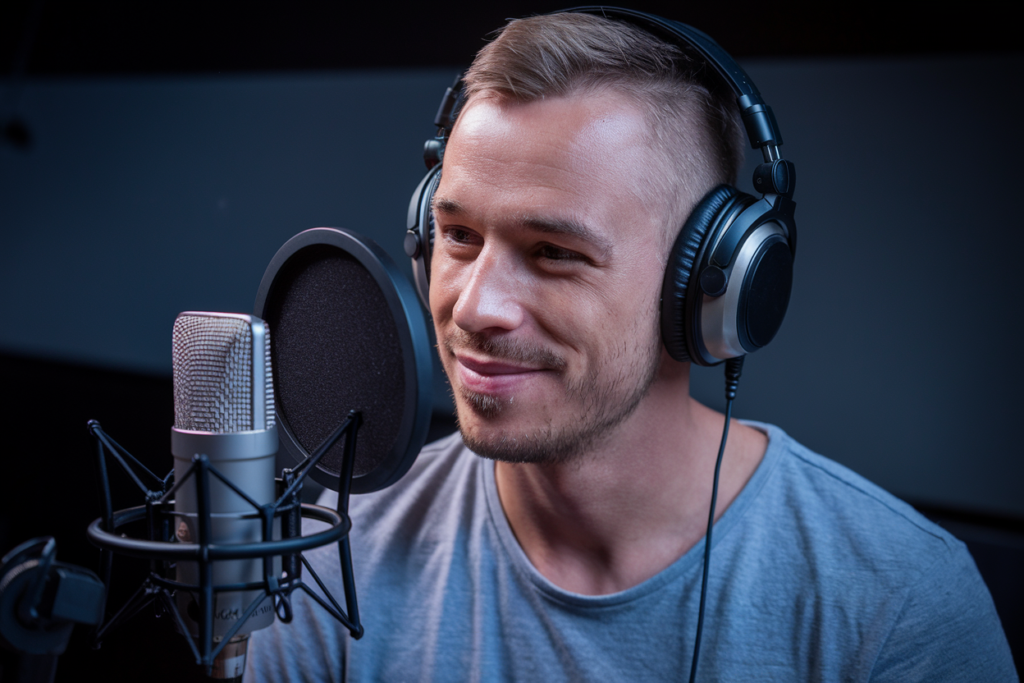Directing Czech voice actors can be a fascinating journey into the world of sound and storytelling. With their rich cultural background and unique vocal qualities, these talented artists bring characters to life in ways that resonate deeply with audiences. I’ve discovered that understanding the nuances of their craft is essential for creating compelling audio experiences.
In this article, I’ll share my insights on effectively directing Czech voice actors in video projects. Whether you’re working on animations, commercials, or films, knowing how to communicate your vision clearly can make all the difference. Let’s dive into techniques and tips that will help you harness the full potential of these incredible performers and elevate your production to new heights.
Understanding Directing Czech Voice Actors
Directing Czech voice actors requires a deep appreciation of their cultural background and vocal characteristics. Grasping the intricacies of voice direction significantly impacts the quality of audio experiences.
The Importance of Voice Direction
Voice direction shapes performance quality. Clear guidance leads to authentic portrayals, enhancing emotional resonance in projects. Effective communication fosters a collaborative environment, allowing actors to explore character depth. Specific feedback helps refine delivery, ensuring alignment with project goals. A well-directed session results in compelling performances that engage audiences fully.
Challenges in Voice Acting
Czech voice acting presents unique challenges. Dialectal diversity introduces variations in pronunciation and intonation that demand careful attention. Actors may struggle with technical jargon or specific cultural references unfamiliar to them. Maintaining consistent energy levels during long recording sessions can also pose difficulties for performers. Each challenge requires tailored strategies to ensure clarity and impact while preserving the artistic intent behind every line delivered.
Techniques for Directing Voice Actors
Directing voice actors requires specific techniques to ensure optimal performance. Effective direction enhances the overall audio quality and emotional impact of the project.
Creating a Comfortable Environment
Creating a comfortable environment is crucial for eliciting authentic performances from voice actors. A relaxed atmosphere fosters creativity, allowing artists to express themselves freely. I ensure that the studio space is inviting and free from distractions. Providing snacks and drinks encourages comfort during long sessions. Establishing rapport with voice actors builds trust, making them more open to exploration in their performances.
Communicating Effectively
Communicating effectively streamlines the directing process and clarifies expectations. I use clear, concise language when giving feedback or instructions. Articulating specific goals for each take helps actors understand my vision. Active listening plays a vital role in this process; I pay close attention to their responses to gauge how best to guide them further. Encouraging questions creates an open dialogue, ensuring that all parties are aligned throughout the recording session.
Key Considerations for Czech Voice Actors
Understanding the unique aspects of directing Czech voice actors enhances the overall quality of audio projects. Focusing on cultural nuances and language specificity is crucial for achieving authentic performances.
Cultural Nuances
Czech culture influences voice acting significantly. Familiarity with local traditions, humor, and storytelling styles enriches direction. For example, recognizing regional differences in dialects can enhance character authenticity. Acknowledging cultural references ensures that performances resonate with audiences effectively. It’s essential to engage with the actors about their backgrounds to harness personal experiences that can elevate their portrayals.
Language Specificity
Language plays a vital role in shaping performance quality. Directing Czech voice actors requires attention to linguistic intricacies, including pronunciation and idiomatic expressions. Providing resources like glossaries or scripts annotated with phonetic guidance aids clarity during recording sessions. Encouraging actors to embrace their native language’s rhythm and intonation leads to more genuine interpretations. Clear communication regarding specific phrases or technical jargon ensures alignment between director expectations and actor delivery.
Tools and Technology in Voice Direction
Utilizing the right tools and technology enhances the voice direction process, ensuring quality recordings and effective communication. Here’s a look at essential software options and recording equipment.
Software Options
I rely on various software applications to streamline the voice direction process. Popular choices include:
- Pro Tools: This industry-standard digital audio workstation (DAW) provides advanced editing features that enable precise control over vocal tracks.
- Adobe Audition: Known for its user-friendly interface, this software offers powerful noise reduction tools and sound effects integration, enhancing overall audio quality.
- Reaper: A cost-effective DAW with extensive customization options, Reaper supports multiple file formats, making it versatile for different projects.
- Isolate: This innovative app focuses on real-time monitoring of voice performances, allowing me to adjust levels instantly during recording sessions.
These options facilitate clear communication between directors and voice actors while maintaining high production standards.
Recording Equipment
Investing in quality recording equipment is crucial for capturing authentic performances. Key components include:
- Microphones: I prefer condenser microphones like the Neumann U87 or Audio-Technica AT2020 for their clarity and sensitivity to vocal nuances.
- Audio Interfaces: Devices such as Focusrite Scarlett 2i2 ensure high-quality audio input with minimal latency during recordings.
- Headphones: Closed-back headphones like the Sennheiser HD280 Pro provide accurate sound isolation, enabling actors to hear playback without external interference.
- Pop Filters: Using pop filters prevents plosive sounds from disrupting recordings, ensuring cleaner takes during sessions.
Equipping studios with these tools contributes significantly to achieving professional-level audio results in voice acting projects.
Conclusion
Directing Czech voice actors is an enriching experience that requires a deep appreciation for their cultural and vocal uniqueness. I’ve found that creating a comfortable studio environment and fostering open communication significantly enhances performance quality.
By understanding the nuances of language and regional dialects I can guide voice actors to deliver authentic portrayals. Utilizing the right tools and technology adds another layer of professionalism to our projects while ensuring clarity throughout the recording process.
Embracing these techniques not only elevates production value but also contributes to storytelling in a way that resonates with audiences. With careful direction I believe we can unlock the full potential of Czech voice talent, making every project memorable.







